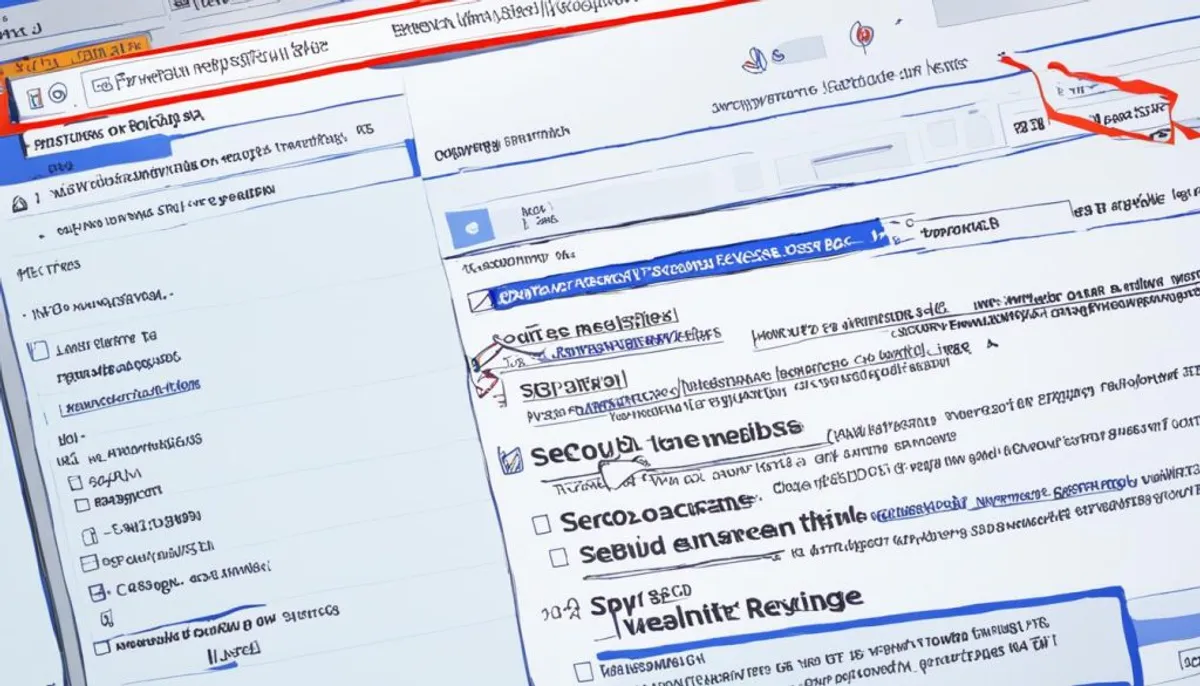Search engine optimization (SEO) poisoning and malicious advertising (malvertising) have increased significantly as more people use search engines than ever before. SEO poisoning affects both individuals and enterprises, yet many are unaware of the security threat it poses. SEO poisoning is a technique used by threat actors to increase the prominence of their malicious websites, making them look more authentic to consumers. SEO poisoning tricks the human mind by assuming the top hits are the most credible and is very effective when people fail to look closely at their search results. This can lead to credential theft, malware infections, and financial losses. Threat actors may even use targeted types of SEO poisoning, like spear-phishing, to go after specific users, like IT admins. The technique enables attackers to target and customize their attacks to specific audiences, making them more challenging to identify and defend against.

Key Takeaways
- SEO poisoning is a technique used by threat actors to boost the visibility of their malicious websites.
- It tricks users into believing the top search results are the most credible, leading to credential theft, malware infections, and financial losses.
- Targeted SEO poisoning, like spear-phishing, can be used to go after specific users, making them more challenging to detect and defend against.
- SEO poisoning and malvertising have become more prevalent as search engine usage has increased.
- Awareness and proactive security measures are crucial to protect against the risks of SEO poisoning.
What is SEO Poisoning?
SEO poisoning is a technique used by threat actors to increase the prominence of their malicious websites, making them appear more authentic to consumers. This search engine optimization attack tricks the human mind by assuming the top hits are the most credible, and it is particularly effective when people fail to scrutinize their search results closely.
Definition and Overview
At its core, SEO poisoning involves manipulating search engine algorithms to boost the ranking of malicious websites, often through techniques like keyword stuffing, cloaking, and private link networks. By employing these malicious SEO tactics, attackers can lure unsuspecting users to their dangerous sites, leading to potential credential theft, malware infections, and financial losses.
Risks and Potential Consequences
The risks posed by SEO poisoning extend beyond individual users. Threat actors may also leverage targeted types of SEO poisoning, such as spear-phishing, to go after specific targets, like IT administrators. This customization makes these attacks more challenging to identify and defend against, as the search quality deterioration can have far-reaching consequences for both individuals and enterprises.
How SEO Poisoning Works
Malicious actors employ a variety of techniques to carry out SEO poisoning attacks. One common method is typosquatting, which targets users who might inadvertently input a website address with a minor typo or click on a link with a misspelled URL. To exploit these minor user errors, attackers register domain names similar to legitimate ones, hoping to lure unsuspecting victims to their malicious websites.
Another set of tactics commonly associated with SEO poisoning falls under the category of “black hat SEO.” These unethical practices are used by some website owners to artificially boost their search engine rankings, often at the expense of user experience and security. Some of the more prevalent black hat SEO techniques include:
Keyword Stuffing
Keyword stuffing involves cramming irrelevant keywords into a webpage’s text, meta tags, or other portions of the website, with the goal of misleading search engine algorithms into giving the website a higher ranking.
Cloaking
Cloaking is the practice of presenting search engine crawlers with different content than what is displayed to the end-user when the link is clicked. This technique can influence search engine rankings by displaying favorable information to crawlers while displaying irrelevant content to users.
Search Ranking Manipulation
Manipulating search rankings artificially increases a website’s click-through rate, boosting its ranking in search engines. Attackers often utilize bots or humans to search for keywords and generate fake clicks for a particular website.
Private Link Networks
The use of private link networks involves creating a group of unrelated websites and connecting them to each other, resulting in a network of backlinks to a main website. This is an attempt to imitate legitimate link-building practices and influence search engine algorithms.
These tactics, when employed by malicious actors, can significantly disrupt the integrity of search engine results, leading to the proliferation of contaminated content and increasing the risk of credential theft, malware infections, and financial losses for both individuals and enterprises.
Examples of Recent SEO Poisoning Campaigns
In January 2023, there were multiple incidents of fake installers distributed via SEO poisoning or malvertising. Cybercriminals used poisoned Google Ads to drop a Python-based malware that would steal sensitive information such as browser passwords and cryptocurrency wallets. This trend of fake installers and SEO poisoning remains popular among criminals for delivering malware and perpetrating information theft.
For example, recent incidents involved fake installers for OBS Studio or Notepad++ which loaded malware to steal sensitive information. These attacks demonstrate the ongoing threat of SEO poisoning and the lengths cybercriminals will go to compromise user systems and cryptocurrency holdings.
| Attack Type | Example Incident | Impact |
|---|---|---|
| SEO Poisoning | Fake OBS Studio installer | Malware infection, information theft |
| Malvertising | Poisoned Google Ads dropping Python malware | Credential theft, cryptocurrency theft |
These examples underscore the ongoing threat of SEO poisoning and the need for vigilance against emerging malware delivery tactics used by cybercriminals. Proactive measures to detect and mitigate these attacks are critical to safeguarding organizations and individuals from the consequences of these malicious campaigns.
Detecting SEO Poisoning Attacks
Identifying SEO poisoning can be a challenging task, but organizations can better prepare themselves by implementing effective detection procedures. One such approach involves leveraging Digital Risk Monitoring (DRM) tools to detect typosquatting attempts.
Digital Risk Monitoring Tools
As soon as a new lookalike URL is created, DRM can promptly inform security personnel with valuable information about the owner, allowing them to take swift action to mitigate potential threats.
Indicators of Compromise (IOCs)
Another method to detect malicious URLs is through the utilization of Indicators of Compromise (IOC) lists containing URLs. These lists can provide evidence on suspicious website behavior, anomalous search engine rankings, phishing attempts, unexpected changes in website traffic, and suspicious content. Security teams can use these IOC lists as watchlists or blocklists for preemptive detection or blocking of potentially malicious websites.
Endpoint Detection and Response (EDR)
Endpoint detection and response (EDR) solutions are an effective way to quickly spot IOCs, as they monitor and record user and client history. EDR tools can undertake forensic analysis and investigate all user activity during a breach to determine a malicious file’s entry into the system. By evaluating these data points, security teams can detect and contain SEO poisoning attacks in a timely manner.
Preventing SEO Poisoning
Beyond monitoring methods, organizations can also take proactive steps to prevent seo poisoning prevention attacks. User security training and awareness are critical in combating SEO poisoning attempts. Organizations may lower the chances of falling prey to these attacks by training staff on safe browsing practices, phishing awareness, and effective endpoint security measures.
Implementing a robust security posture and blocking known malicious sites can aid in preventing seo poisoning attempts. Organizations can reduce the risk of employees visiting dangerous websites by frequently upgrading security software and establishing rigorous web filtering procedures.
Regularly disclosing abnormal seo results to your security team allows for rapid identification and response to any SEO manipulation attempts. It can also help ensure that the company can proactively protect its search engine rankings and online reputation.
Mitigating SEO Poisoning Attacks
To reduce the risk of SEO poisoning mitigation attacks, organizations can utilize powerful typosquatting detection tools. One such solution is CrowdStrike Falcon Intelligence Recon, which helps identify whether a variation of a company’s domain is already being used by someone else.
By proactively monitoring for potential typosquatting attempts, businesses can stay one step ahead of malicious actors attempting to hijack their online presence and exploit unsuspecting users. These advanced detection capabilities provide valuable insights, allowing security teams to take swift action and mitigate the risks associated with SEO poisoning campaigns.
Incorporating robust typosquatting detection strategies as part of a comprehensive cybersecurity approach is crucial in the fight against SEO poisoning threats. This helps organizations protect their brand, safeguard their customers, and maintain the integrity of their online presence in the face of evolving seo poisoning mitigation tactics.

Blackhat SEO Tactics
In the world of digital marketing, some website owners resort to unethical tactics to boost their search engine rankings. These black hat SEO practices, while effective in the short term, can have detrimental long-term consequences for both the website and its users. Let’s explore some of the most common black hat SEO tactics employed by malicious actors.
Keyword Stuffing
Keyword stuffing involves cramming a webpage with an excessive number of irrelevant keywords, often hidden in the text, meta tags, or other parts of the website. This technique aims to mislead search engine algorithms into believing the website is highly relevant to a particular search query, leading to a higher ranking in search engine results. However, this practice can severely compromise the user experience and harm the website’s overall credibility.
Cloaking
Cloaking is a deceptive tactic where website owners present search engine crawlers with different content than what is shown to the user. By displaying favorable information to the crawlers while showing irrelevant or low-quality content to the user, cloaking can manipulate search engine rankings and undermine the trust of the user.
Search Ranking Manipulation
Search ranking manipulation involves artificially increasing a website’s click-through rate to boost its position in search engine results. This can be achieved through the use of bots or even paid human workers to search for specific keywords and generate fake clicks for a particular website. This technique distorts the true user engagement and popularity of the website, leading to a misleading ranking.
Private Link Networks
Private link networks are a group of interconnected websites that are created solely for the purpose of generating backlinks to a primary website. By establishing these networks, website owners can attempt to imitate legitimate link-building practices and influence search engine algorithms, ultimately resulting in a higher ranking for their main website. However, this tactic is considered a form of black hat SEO and can lead to severe penalties from search engines.
Risks of Ignoring SEO Poisoning
Ignoring the threat of SEO poisoning can have severe consequences for both individuals and enterprises. These malicious tactics can lead to credential theft, malware infections, and financial losses if left unchecked.
Cybercriminals are constantly evolving their techniques, and they may even use targeted types of SEO poisoning, such as spear-phishing, to target specific users, like IT administrators. This makes these attacks even more challenging to identify and defend against, as they are customized to specific audiences.
The risks associated with SEO poisoning are not limited to individual users. Organizations that fail to address this threat can also face reputational damage, disruption to business operations, and significant financial consequences resulting from malware infections and data breaches.
| Risk | Description |
|---|---|
| Credential Theft | Attackers can use SEO poisoning tactics to lure victims to malicious websites that harvest their login credentials, putting their personal and professional accounts at risk. |
| Malware Infection | Malicious websites promoted through SEO poisoning can distribute a variety of malware, including ransomware, spyware, and keyloggers, compromising the victim’s device and network. |
| Financial Loss | The financial impact of SEO poisoning can be significant, as it can lead to identity theft, fraud, and other financial crimes that can cost individuals and organizations thousands of dollars. |
Ignoring the risks of SEO poisoning can have far-reaching consequences, putting both individuals and enterprises at risk of serious harm. Recognizing and addressing this threat is crucial for maintaining online security and protecting sensitive information.
SEO Poisoning Protection Strategies
To safeguard against the growing threat of SEO poisoning, organizations must implement a comprehensive security strategy. Web security solutions play a crucial role in this endeavor, helping to identify and block malicious sites that serve contaminated content. By leveraging advanced threat intelligence and AI-powered detection, these solutions can effectively detect and mitigate the impact of SEO poisoning attempts.
Web Security Solutions
Leading web security providers offer a range of capabilities to defend against SEO poisoning attacks. Their solutions can analyze web traffic patterns, identify anomalies, and quickly block access to suspicious websites that may be distributing malware or engaging in credential theft. By continuously monitoring the online landscape, these tools can help organizations stay one step ahead of the ever-evolving tactics of cybercriminals.
Endpoint Protection Platforms
In addition to web security, endpoint protection platforms are essential for preventing the installation of malware delivered through SEO poisoning tactics. These advanced solutions can detect and block the execution of malicious files, preventing the spread of threats and safeguarding critical business data. By combining real-time threat detection, automated response, and comprehensive endpoint protection, organizations can effectively mitigate the risks posed by SEO poisoning attacks.
Patch Management
Maintaining a robust patch management program is also crucial in the fight against SEO poisoning. By keeping systems and software up-to-date, organizations can close vulnerabilities that attackers may attempt to exploit. Regular patching not only addresses known security flaws but also helps to strengthen the overall security posture, making it more difficult for cybercriminals to gain a foothold through SEO poisoning techniques.
By implementing a layered approach that combines web security solutions, endpoint protection platforms, and a comprehensive patch management strategy, organizations can effectively safeguard their digital assets and minimize the impact of SEO poisoning attacks.

Role of Cybersecurity Vendors
Cybersecurity vendors play a crucial role in protecting organizations against SEO poisoning attacks. Solutions like CrowdStrike Falcon Insight XDR, which includes real-time response capabilities, can help security teams detect and respond to SEO poisoning incidents instantly. By leveraging advanced threat intelligence, AI-powered detection, and comprehensive endpoint protection, cybersecurity vendors can provide comprehensive defense against the evolving threat of SEO poisoning.
Integrating advanced cybersecurity vendors’ tools and technologies into an organization’s security posture is essential for mitigating the risks posed by SEO poisoning. These solutions enable security teams to quickly identify and address malicious websites, phishing attempts, and other tactics used by cybercriminals to exploit search engine optimization vulnerabilities.
By partnering with leading cybersecurity vendors, organizations can benefit from their extensive threat intelligence, machine learning algorithms, and real-time response capabilities to stay ahead of the ever-evolving SEO poisoning threat landscape. This collaborative approach empowers businesses to proactively protect their online presence, reputation, and critical assets from the devastating consequences of these malicious tactics.
Conclusion
This article has delved into the intricate world of SEO poisoning, a tactic that cybercriminals increasingly employ to distribute malware, steal credentials, and engage in other illegal activities. As the threat of SEO poisoning continues to evolve, it is crucial for both individuals and businesses to remain vigilant and take proactive steps to protect themselves.
By understanding the various techniques used in SEO poisoning attacks, such as typosquatting, keyword stuffing, and search ranking manipulation, organizations can develop robust cybersecurity measures to safeguard their online presence. This includes conducting regular security assessments, educating staff and customers on safe browsing practices, and implementing advanced threat protection solutions like endpoint detection and response systems.
Through a combination of user awareness, security best practices, and the deployment of cutting-edge cybersecurity tools, organizations can effectively mitigate the risks posed by SEO poisoning and maintain a strong online reputation. By staying informed and taking proactive action, businesses can continue to thrive in the digital landscape, while protecting themselves and their customers from the growing threat of SEO poisoning.
FAQ
What is SEO Poisoning?
SEO poisoning is a technique used by threat actors to increase the prominence of their malicious websites, making them look more authentic to consumers. It tricks the human mind by assuming the top hits are the most credible, leading to credential theft, malware infections, and financial losses.
How do attackers carry out SEO poisoning?
Attackers use various techniques like typosquatting, keyword stuffing, cloaking, search ranking manipulation, and private link networks to boost the rankings of their malicious websites in search engine results.
Can you provide examples of recent SEO poisoning campaigns?
In January 2023, there were multiple incidents of fake installers distributed via SEO poisoning or malvertising, targeting users with Python-based malware to steal information such as browser passwords and cryptocurrency wallets.
How can organizations detect and prevent SEO poisoning attacks?
Organizations can use typosquatting detection tools, Indicators of Compromise (IOCs), and Endpoint Detection and Response (EDR) solutions to identify and block malicious websites. They can also train employees on safe browsing practices and implement robust web security measures.
What are the risks of ignoring SEO poisoning?
Ignoring SEO poisoning can lead to credential theft, malware infections, and financial losses for both individuals and enterprises. Threat actors may even use targeted types of SEO poisoning, like spear-phishing, to go after specific users, making them more challenging to identify and defend against.
How can cybersecurity vendors help protect against SEO poisoning?
Cybersecurity vendors can provide comprehensive defense against SEO poisoning by offering solutions like real-time response capabilities, advanced threat intelligence, AI-powered detection, and endpoint protection.
RelatedRelated articles



